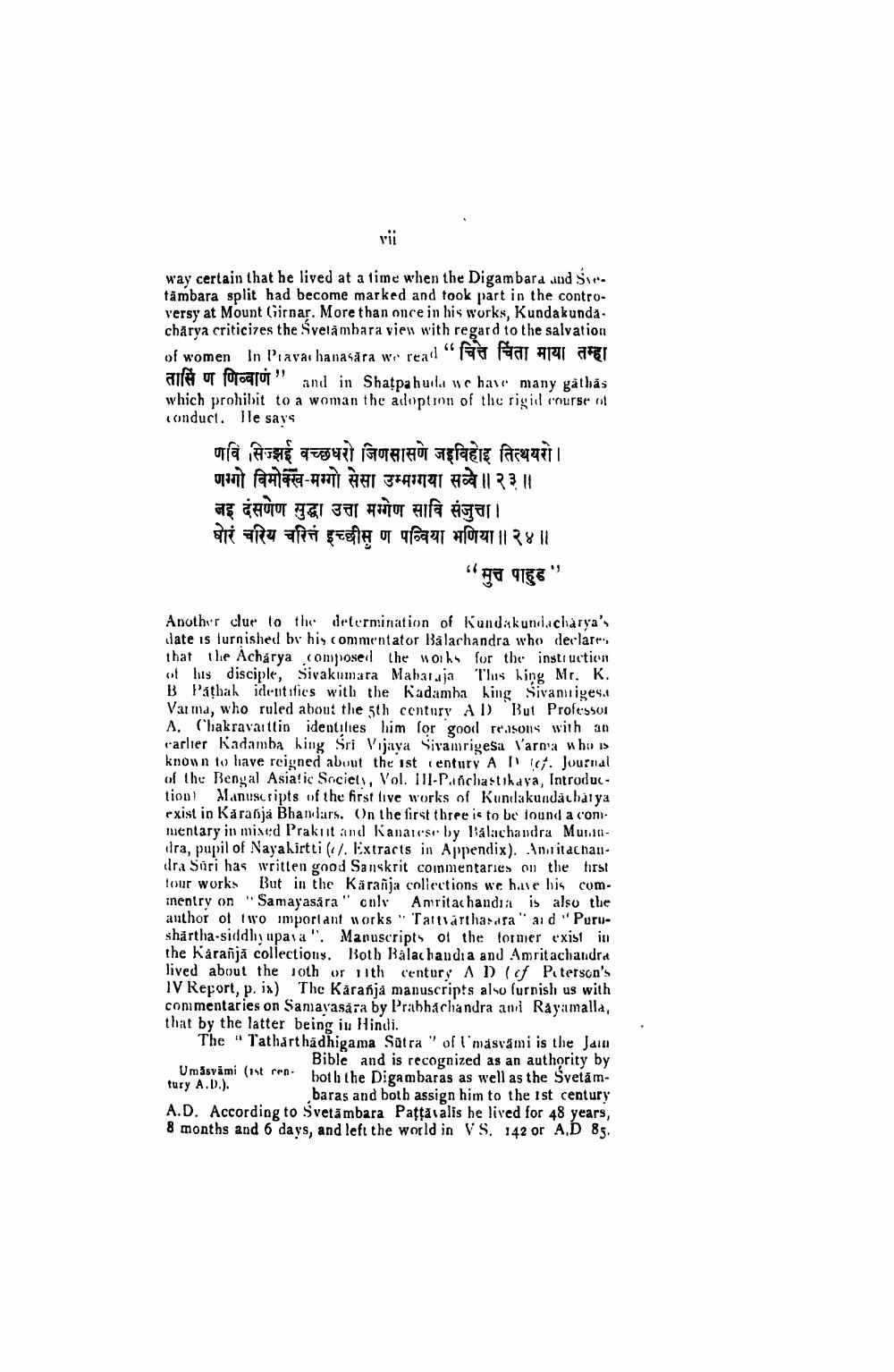________________
way certain that he lived at a time when the Digambard and Sir. tämbara split had become marked and took part in the controversy at Mount Girnar. More than once in his works, Kundakundacharya criticizes the Svelambara view with regard to the salvation of women In Pravachanasara we read " fa A121 a gr allo of foroarot" and in Shatpahuila we have many gathas which prohibit to a woman the adoption of the rigid ourse of conduct. Ile says
णवि सिज्झई वच्छधरो जिणसासणे जइविहोइ तित्थयरो। जग्गो विमोक्ख-मम्गो सेसा उम्मग्गया सव्वे ॥२३॥ जइ दंसणेण सुद्धा उत्ता मग्गेण सावि संजुत्ता। घोरं चरिय चरितं इच्छीस ण पब्विया भणिया ॥२४॥
"FT 9153"
Another clue to the determination of Kunda kundacharya's date is turnished by his commentator Balachandra who declares that the Acharya composed the works for the instruction of his disciple, Sivakumara Maharaja This hing Mr. K. B Pathak identities with the Kadamba hing Sivantiges. Varma, who ruled about the 5th century AD But Professor A. Chakravarttio identifies him for good reasons with an varlier Kadamba hing Sri Vijaya Sivamrigesa Varna who is known to have reigned about the 1st century A 1 6 . Journal of the Bengal Asia!ic Society, Vol. III-Panchastikaya, Introduction Manuscripts of the first live works of Kunda kunda chatya exist in Karanja Bhandars. On the first three is to be found a com mentary in mixed Prakrit and anaiese by Balachandra Mundidra, pupil of Nayahirtti (1. Extracts in Appendix). Invitachan. dra Säri has written good Sanskrit coinmentaries on the first tour works But in the Karanja collections we have his comInentry on "Samayasära" culy Aniritac handia is also the author of two important works " Tattarthasara" and "Purushartha-siddhyupa a". Manuscripts of the former exist in the Karanjă collections. Both Balac bandia and Amritachandra lived about the oth or 11th century AD ( Paterson's IV Report, p.ix) The Karanja manuscripts also furnish us with conimentaries on Samayasara by Prabhachandra ami Rayamalla, that by the latter being iu Hindi. The "Tatharthadhigama Sutra" of 'masvami is the Jain
Bible and is recognized as an authority by fost ren both the Digambaras as well as the Svetamtury A.D.).
baras and both assign him to the 1st century A.D. According to Svetambara Patta alis he lived for 48 years, 8 months and 6 days, and left the world in VS. 142 or A.D 85.




